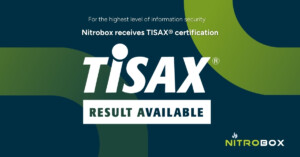Every business can expand internationally1 in today’s globalized economy—from solopreneurs selling homemade knitwear on Etsy to the brightest FinTech unicorns. International expansion is an exciting step. Businesses can massively increase their potential consumer base, boost sales, grow their profitability, and fulfill their true potential thanks to modern technologies like automated billing and monetization.
Consider how McDonald’s grew from a local Illinois fast-food restaurant into a global behemoth2, boasting over 36,000 restaurants in more than 100 nations. Similarly, Just Eat—the Danish takeaway delivery app—only hit the big time when it expanded into the UK3.
However, expanding internationally is tricky. Each country has its own rules and regulations, so it’s essential to set up the appropriate financial infrastructure before selling overseas.
This article examines how companies can expand internationally while minimizing complexity and ensuring ongoing compliance. If you’re looking to start your company’s expansion or have already gone global but have problems with your current financial infrastructure, then you’ve come to the right place.
more markets, more money – but also more problems
What questions should my company ask before expanding into new markets?
The first step is for companies to define the specific billing and monetization challenges they will face when expanding internationally.
Taxation
Key question: “How do I meet tax regulations in X countries for my business?”
Every country has its own tax rules and regulations. Unfortunately, ignorance is no excuse. Your company will face hefty consequences if it falls foul of a country’s tax laws—while you will also waste valuable time and energy trying to resolve these issues with the taxman.
Understand your company’s tax obligations and prepare your finance processes before entering a new market. This is an absolute must.
Invoice localization
Key questions:
- “How can I generate invoice documents in the new country’s native language?”
- “How can I generate invoices that follow a country’s local regulations around invoice formatting or content?
A basic invoice that follows German regulations. There can be nuances dependent on industry and product or service provided
A slightly simpler invoice for UK business.
It’s not enough to simply send out invoices with the correct figures. Some countries have specific regulations around formatting and content—for example, in Germany4, all invoices must include a unique sequential number, full details of the goods or services provided, and the VAT rate applied (or details to support zero VAT, such as export, reverse charge, or intra-community supply). Conversely, the U.S. is far more relaxed when it comes to invoices5.
Get up to speed with each market’s invoicing localization requirements before you begin to sell overseas. If you want to really endear yourself to global customers and regulatory bodies, consider language localization too (i.e. sending invoices in the country’s native language).
Compliance
Key question: “How do we ensure ongoing compliance when expanding into new countries?”
Many countries have specific compliance requirements that, if violated, can land your business in hot water. Consider the Portuguese invoicing requirements, for example. Portugal requires all companies to invoice customers through certified billing software6, while Britain’s Making Tax Digital (MTD) initiative means that companies must keep digital records and use software to submit their VAT returns7. Falling foul of the MTD requirements could see your business fined 100% of the VAT due8, so your business must have a plan in place to ensure ongoing compliance.
Unfortunately, that’s not all. Some countries (such as Italy9) have introduced continuous transaction controls. These regulations require that all businesses based in Italy first send their invoices to the government before sending them over to their customers.
Accounting
Key questions:
• “How do we handle our accounting and track our revenues when selling to multiple countries?”
• “How can we segment our financial reporting by market or country?”
Running a business becomes exponentially more complex with each new market and currency that’s added into the mix. But why, exactly?
Every country has its own regulations. Therefore, to remain compliant, companies always follow their country of residence’s accounting rules. This ensures the balance sheets and financial reports they share with stakeholders are uniform and compliant, for example.
However, when companies add foreign currencies into the mix, they need to evaluate foreign currency positions in their functional (base) currency. In other words, German companies need to account for the pounds (£) they receive from UK-based customers in euros (€).
But this is easier said than done. Foreign exchange (FX) rates are always changing, so you need to determine the correct figure for the moment in time when you received the money in your local currency. Imagine your German company ships something to the UK and charges £100. When it invoices the customer, it needs to book the £100 (i.e. account for this figure in its set of accounts). The XR at that time is 1:1.20, so the company books 83.33€ on its accounts receivable.
However, when the customer pays two months later, the company receives 90€ as the rate has depreciated. There’s now a 6.66€ gap that the company must automatically book to a currency gain or fluctuation account. So, what’s the easiest way to do this? By implementing automated multi-currency accounting tools.
It’s worth mentioning that these tools also provide an overview of the business’s overall performance, and allow users to drill down into how they’re performing in each market.
Discover Nitrobox for internation business
Billing solutions
Discover how our robust billing automation helps you bring products to international markets
Accounting & tax solutions
Wave goodbye to spreadsheets and eliminate manual work with smart revenue accounting
Enough of the questions, it’s time for some answers
Despite the billing and monetization complexities when expanding internationally, the opportunities far outweigh the challenges. So, how can companies prepare for expected hurdles and expand with minimal fuss?
By implementing a purpose-built international order to cash platform, like Nitrobox.
Our platform provides everything your company needs to go global. Our sub-ledger accounting and tax solution is easily configured to any of the regions in which you operate. Additionally, with international-first billing automation features, you can monetize any business model, anywhere, with a single centralized platform. We’ve helped countless companies overcome their internationalization hurdles over the years, leveraging our in-house expertise and years of experience. Finally, we offer the robust reporting and analytics solutions you need to make sure all your billing and monetization efforts come to fruition.
Expand internationally in weeks, not months or years. Create invoices in any language or currency and post them with just a few clicks. Ensure ongoing compliance with ever-changing international regulations and implement new payment strategies easily to provide customers with their preferred payment methods and terms. Focus on growing your business and finding new possibilities, rather than worrying about essential but tedious international billing and invoicing requirements.
Expand internationally with ease
We all know, as exciting as expanding internationally is, you can’t simply jump the gun. The costs of non-compliance (whether in terms of time, money, or unwelcome hassle) are huge.
But as an automated billing and monetization solution, Nitrobox can take a lot of that off your plate.
Configure your organization’s international digital business models directly into our Nitrobox platform. Set up a customized solution centered around your markets’ specific compliance and invoicing requirements, minimizing your need for ongoing human intervention and oversight.
Benefit from the opportunities of international expansion instead of letting the challenges hold you back. We are looking forward to supporting you in your international expansion. Let’s talk!
Sources:
1: https://www.worldfirst.com/uk/blog/guides/6-reasons-to-expand-internationally-in-2022/
2: https://corporate.mcdonalds.com/corpmcd/our-company/who-we-are/our-history.html
3: https://londonlovesbusiness.com/how-just-eat-became-uks-most-popular-food-website/
4: https://www.avalara.com/vatlive/en/country-guides/europe/germany/vat-invoice-requirements.html
5: https://www.sumup.com/en-us/invoices/invoicing-essentials/what-information-is-on-an-invoice/
6: https://www.pincvision.com/news/update-mandatory-certified-invoicing-software-portugal
7: https://www.gov.uk/government/publications/making-tax-digital/overview-of-making-tax-digital
8: https://www.avalara.com/vatlive/en/country-guides/europe/uk/making-tax-digital/mtd-penalties.html
9: https://ec.europa.eu/digital-building-blocks/sites/display/DIGITAL/eInvoicing+in+Italy
disclaimer: this article is not legal advice. This article is meant for informational purposes only.







